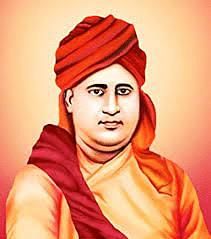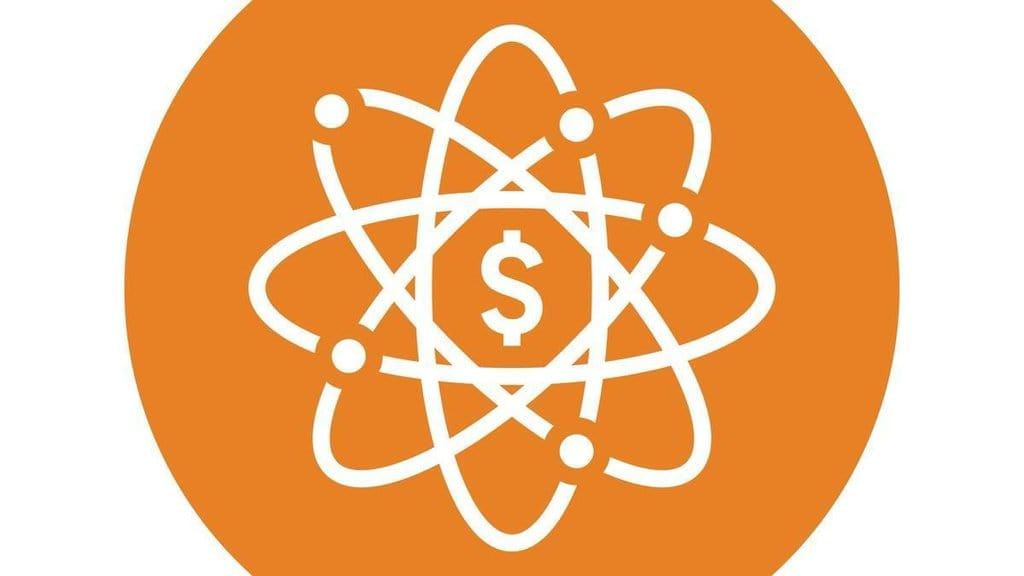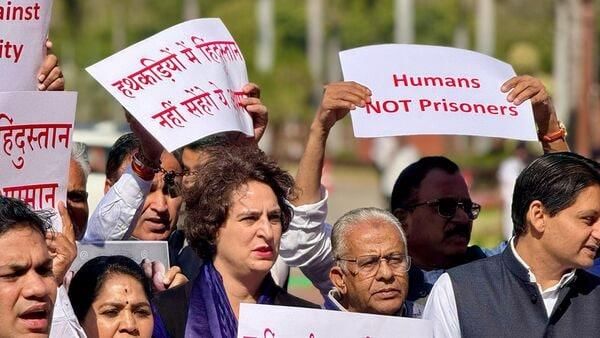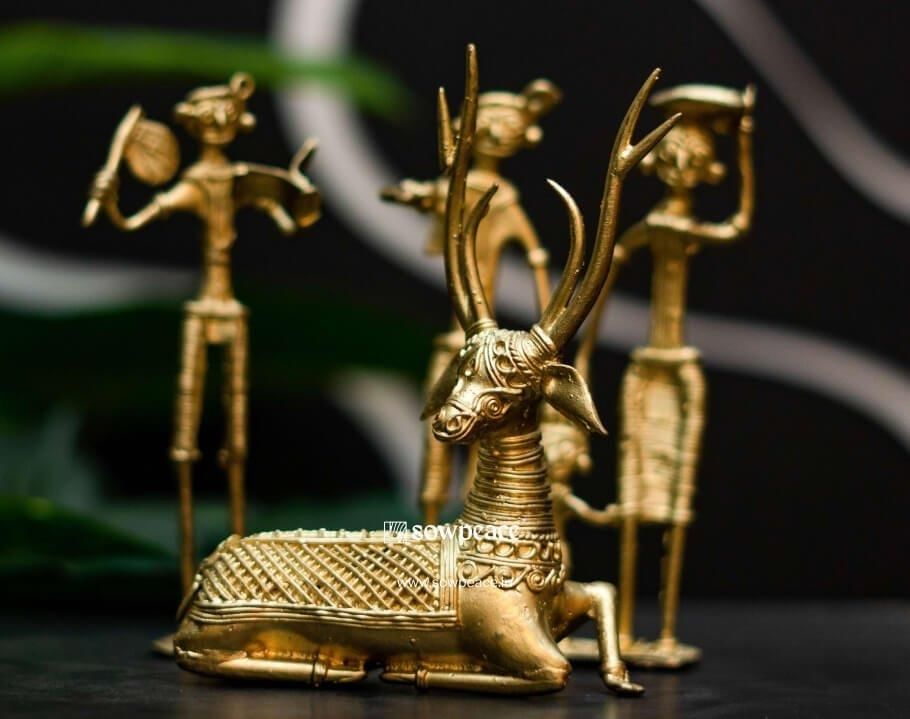UPSC Daily Current Affairs: 13th February 2025 | Current Affairs & Hindu Analysis: Daily, Weekly & Monthly PDF Download
GS1/History & Culture
Dayanand Saraswati: A Pioneer of Modern India
Source: Indian Express
 Why in News?
Why in News?
On February 12, 2025, India celebrated the 201st birth anniversary of Dayanand Saraswati, a significant figure in the Indian reform movement. The year 2023 marked a year-long commemoration of his 200th birth anniversary, emphasizing his contributions to modern Indian society.
- Born on February 12, 1824, in Morbi, Gujarat.
- Founded the Arya Samaj in 1875, promoting social reforms and education.
- Authored Satyarth Prakash, advocating a return to Vedic principles.
- Supported women's education and opposed practices like child marriage and untouchability.
Additional Details
- Arya Samaj: This organization aimed to foster social awakening by rejecting ritualistic practices in Hinduism and promoting a unified society based on Vedic teachings.
- Philosophy: Dayanand's ten founding principles emphasized actions benefiting humanity over individual interests, challenging the caste system by advocating for reforms based on merit rather than heredity.
- Cow Protection: He was an early advocate for cow protection, publishing Gokarun·nidhi in 1881 and establishing the Gaurakshini Sabha in 1882.
- Education Initiatives: Following his death in 1883, his followers established the Dayanand Anglo Vedic (DAV) School to blend modern education with cultural and religious teachings.
Dayanand Saraswati's legacy is marked by his relentless pursuit of social justice, educational reform, and the promotion of Vedic principles, which continue to influence contemporary society.
GS3/Science and Technology
Nuclear Energy — Dangerous Concessions on Liability
Source: The Hindu
 Why in News?
Why in News?
The recent announcement in the Union Budget regarding amendments to the Civil Liability for Nuclear Damage (CLND) Act has raised significant concerns and discussions about nuclear energy safety in India. These changes aim to align with international standards but also pose potential risks to public safety.
- The proposed amendments to the CLND Act may attract foreign investment in India's nuclear sector.
- Operator liability is primarily placed on nuclear plant operators, with limited accountability for suppliers.
- India's nuclear liability framework differs from global standards, particularly in terms of financial responsibility and compensation caps.
Additional Details
- Atomic Energy Act (1962): This Indian law governs the development and use of nuclear energy for peaceful purposes, ensuring public safety and national security. It grants the government exclusive control over nuclear materials and the establishment of nuclear power projects.
- Civil Liability for Nuclear Damage (CLND) Act (2010): This law defines the financial liability of nuclear plant operators in the event of an accident, ensuring compensation for victims and holding operators accountable.
- Key Features of CLND:
- Operator Liability: The primary responsibility for accidents lies with the plant operator (NPCIL), not the supplier.
- Right of Recourse: Operators can seek compensation from suppliers for defective equipment, unlike in many other countries.
- Liability Cap: Operator liability is limited to ₹1,500 crore (~$180 million), with the government covering any additional costs.
- Exclusion from Global Regimes: India has not joined international nuclear liability agreements, maintaining domestic financial responsibility.
- Safety Concerns: There is a risk of catastrophic accidents, as seen in the Fukushima and Chernobyl disasters, which highlight the potential long-term consequences of nuclear energy failures.
- Global Standards vs. India: Most countries indemnify suppliers entirely, whereas India holds operators responsible, raising concerns over supplier accountability and safety.
The government's plans to amend the Atomic Energy Act and the CLND Act are aimed at fostering a more favorable environment for foreign investment in nuclear energy, yet they also necessitate careful consideration of the implications for nuclear safety and public welfare.
GS2/Polity
IMMIGRATION AND FOREIGNERS BILL, 2025
Source: The Hindu
 Why in News?
Why in News?
The Union Home Minister, Amit Shah, is expected to introduce the Immigration and Foreigners Bill, 2025, during the current Budget session of Parliament. This proposed legislation aims to replace several outdated laws governing immigration and the registration of foreigners.
- The bill will replace existing laws including the Passport (Entry into India) Act, 1920, the Registration of Foreigners Act, 1939, the Foreigners Act, 1946, and the Immigration (Carriers’ Liability) Act, 2000.
- These existing laws were enacted during the pre-Constitution era and were relevant during extraordinary circumstances such as the world wars.
- The bill outlines responsibilities for educational institutions, hospitals, and residential premises regarding the registration of foreigners.
- It introduces penalties for carriers that fail to comply with immigration regulations.
Additional Details
- Registration Obligations: The bill mandates that universities and educational institutions must provide information to the registration officer for any foreign students they admit.
- Healthcare Responsibilities: Hospitals and medical institutions are required to notify authorities about any foreign patients receiving indoor treatment and their attendants.
- Residential Reporting: Individuals controlling residential premises must inform the registration officer about any foreigners staying in their facilities.
- Carriers' Duties: Airlines and shipping companies must ensure they remove any passengers denied entry by immigration authorities and must submit passenger and crew data in advance.
- Penalties: Violating the regulations set forth in the bill can result in fines up to ₹5 lakh for carriers.
The Immigration and Foreigners Bill, 2025, seeks to modernize the legal framework governing foreigners in India, ensuring better regulation and compliance while reflecting contemporary needs.
GS3/Defence & Security
P-8I Aircraft Procurement Proposal
Source: The Hindu
 Why in News?
Why in News?
India is considering reviving its plan to acquire six additional P-8I long-range maritime patrol aircraft from the United States.
Key Takeaways
- The P-8I Neptune is a sophisticated maritime patrol aircraft designed for the Indian Navy.
- This aircraft is a variant of the U.S. Navy's P-8A Poseidon and is intended to enhance India's maritime capabilities.
Additional Details
- P-8I Neptune: The Boeing P-8I Neptune serves as a multi-mission maritime patrol aircraft that has replaced the aging Tupolev Tu-142 fleet of the Indian Navy.
- Advanced Capabilities: Equipped with advanced sensors and weapon systems, the P-8I can conduct a variety of missions including anti-submarine warfare (ASW), anti-surface warfare (AsuW), intelligence gathering, maritime patrol, and surveillance.
- Specifications:
- Length: 39.47 m
- Wingspan: 37.64 m
- Height: 12.83 m
- Maximum Take-off Gross Weight: 85,139 kg
- Maximum Speed: 789 km/h
- Maximum Altitude: 12,496 m
- Range: Over 2,222 km with a station time of four hours.
This proposed procurement is aimed at enhancing India's maritime security and operational capabilities in a growingly complex regional security environment.
GS1/History & Culture
Dokra Artwork
Source: NDTV
 Why in News?
Why in News?
Recently, the Prime Minister of India presented French President Emmanuel Macron with a meticulously crafted Dokra artwork, highlighting the significance of this traditional craft.
- Dokra art, also known as bell metal craft, has a rich history spanning over 4,000 years.
- This folk art is primarily practiced by the Dhokra Damar tribes, who are skilled metalsmiths.
- Artisans mainly reside in eastern India, notably in West Bengal, Odisha, Jharkhand, and Chhattisgarh.
Additional Details
- Unique Characteristics: Each Dokra piece is one-of-a-kind, handcrafted, and inspired by themes from mythology, nature, and everyday life.
- Manufacturing Process: The creation of Dokra art involves a sophisticated lost wax technique where artisans sculpt a basic clay model, coat it in wax, and etch intricate details. This is followed by forming a mold with another clay layer and pouring molten metal—commonly brass or copper—into it. The heat melts the wax, allowing the metal to take the shape of the model. Once cooled, the outer clay mold is broken away to reveal the sculpture.
This exquisite form of art not only reflects the cultural heritage of India but also showcases the craftsmanship and creativity of the artisans involved. The presentation of Dokra artwork to international leaders signifies India's rich artistic traditions.
GS3/Economy
MITRA Platform: A New Initiative by SEBI
Source: The Hindu
Why in News?
The Securities and Exchange Board of India (SEBI) has recently launched a digital platform named MITRA, designed to assist investors in managing their mutual fund investments effectively.
- MITRA stands for Mutual Fund Investment Tracing and Retrieval Assistant.
- The platform aims to help investors track and reclaim inactive or unclaimed mutual fund folios.
- It encourages compliance with Know Your Customer (KYC) norms.
Additional Details
- Purpose of MITRA: The platform addresses the common issue of investors losing track of their mutual fund investments over time due to reasons such as lack of updated contact information or unawareness of investments made in their name.
- The initiative provides a searchable database of inactive and unclaimed mutual fund folios, developed by Registrar and Transfer Agents (RTAs), empowering investors to identify their overlooked investments or those made by others for which they may be the rightful claimants.
- Inactive Folio Criteria: A mutual fund folio is classified as inactive if there have been no investor-initiated transactions—financial or non-financial—for a period of ten years, even if a unit balance exists.
- Furthermore, SEBI has updated the mandate of the Unit Holder Protection Committee (UHPC), which is now tasked with reviewing inactive folios alongside unclaimed dividends and redemptions to ensure proactive measures are taken to minimize such cases.
This initiative by SEBI aims to enhance investor engagement and ensure that individuals can reclaim their rightful investments, thereby improving overall trust in the mutual fund system.
GS2/International Relations
Nordic-Baltic Eight (NB-8) Countries
Source: The Hindu
Why in News?
Prime Minister Modi had a significant meeting with Estonian President Alar Karis during the AI Action Summit held in Paris. The discussions revolved around enhancing trade, technology, cybersecurity, and fostering stronger relationships within the Nordic-Baltic Eight (NB-8) framework.
- First bilateral meeting focused on trade, digital ties, and cybersecurity.
- PM Modi encouraged Estonian businesses to invest in India's IT and cybersecurity sectors.
- Addressed issues of digital governance and cybersecurity collaboration amid the Russia-Ukraine conflict.
- Stressed the importance of India-Nordic-Baltic (NB-8) cooperation and India's diplomatic role in the EU and UN.
- Highlighted Estonia's interest in yoga, enhancing cultural exchanges.
Additional Details
- About Nordic-Baltic Eight (NB-8) Countries:This regional cooperation platform consists of:
- Nordic Countries: Denmark, Finland, Iceland, Norway, Sweden
- Baltic States: Estonia, Latvia, Lithuania
- The NB-8 cooperation originated in the 1990s following the independence of the Baltic states from Soviet control, with formal engagement commencing in 1989.
- The framework for NB-8 was officially established in 2000 to promote regional diplomatic and economic initiatives.
- Structural Mandate:
- Trade and Economic Growth: Strengthening business and investment partnerships.
- Technology and Innovation: Collaborating on digital governance, artificial intelligence, and cybersecurity.
- Security and Defense: Enhancing cooperation within NATO and EU frameworks.
- Climate and Energy Policy: Promoting sustainability and energy security initiatives.
- Leadership rotates annually among NB-8 countries, with Denmark set to chair in 2025, Sweden in 2024, and Latvia in 2023.
This collaboration aims to advance mutual interests in trade, technology, and security while fostering cultural ties among the member countries.
GS2/Polity
Should Convicted Persons Be Allowed to Contest Elections?
Source: The Hindu
Why in News?
The Supreme Court is currently reviewing petitions from Ashwin Upadhyay and others, advocating for a lifetime ban on individuals convicted of crimes from contesting elections.
- The debate centers around the balance between democratic rights and ethical standards for political candidates.
- Current laws disqualify convicted individuals for specific periods based on the severity of their crimes.
Additional Details
- Legal Framework:The Representation of the People Act, 1951 (RPA) outlines eligibility for candidates. Key provisions include:
- Section 8(1) and 8(2): Disqualifies individuals convicted of serious offenses, like terrorism and corruption, from contesting elections.
- Section 8(3): Individuals sentenced to two years or more are disqualified for six years post-release.
- Landmark Judgments:
- Lily Thomas v. Union of India (2013): Established immediate disqualification for legislators convicted of crimes with significant sentences.
- Public Interest Foundation v. Union of India (2018): Advocated for decriminalization of politics but deferred legislative action to Parliament.
- Election Commission's Recommendations: Suggested barring candidates with serious criminal charges at the nomination stage.
Arguments in Favour of Allowing Convicted Persons to Contest Elections
- Presumption of Innocence: Upholds the principle of "innocent until proven guilty," advocating for disqualification only after appeals.
- Political Vendetta: Concerns about misuse of legal processes for political rivalry.
- Right to Representation: Restricting candidates may limit voters' choices, especially for popular figures.
- Judicial Delays: Prolonged legal processes may unfairly penalize individuals awaiting acquittal.
Arguments Against Allowing Convicted Persons to Contest Elections
- Moral and Ethical Standards: Leaders should be held to high moral standards to maintain democratic integrity.
- Decriminalization of Politics: Reducing the number of politicians with criminal records could mitigate corruption.
- Erosion of Public Trust: Holding office should not include those with serious criminal backgrounds to maintain voter confidence.
- Global Democratic Norms: Many democracies have stricter candidate eligibility to uphold governance integrity.
Challenges in Implementation
- Misuse of Laws: Political manipulation of the judicial system may target rivals through false accusations.
- Delay in Electoral Reforms: Legislative inaction on proposed reforms hampers progress.
- Need for Fast-Track Courts: Expedited trials for politicians facing serious charges could ensure justice and uphold electoral rights.
The debate regarding whether convicted individuals should contest elections is pivotal for India's democracy. It involves the constitutional right to contest elections while addressing the pressing issue of criminality in politics. The Supreme Court has initiated measures to prevent criminal elements from entering politics, but it remains crucial for Parliament to legislate effectively, ensuring a balance between electoral rights and ethical governance.
GS2/Polity
Public Accounts Committee (PAC)
Source: The Hindu
Why in News?
The Public Accounts Committee of Parliament has recently urged the government to reassess the current regulations governing toll taxes on National Highways.
- The PAC is a committee formed by the Parliament of India focused on auditing government revenue and expenditure.
- It plays a crucial role in ensuring accountability regarding the government's spending as per the approved budget.
Additional Details
- Purpose of PAC: The committee examines the audit reports prepared by the Comptroller and Auditor General (C&AG) after they are presented in Parliament. Its primary aim is to verify that the funds allocated by Parliament are utilized judiciously by the government.
- Historical Background: Established in 1921, the PAC is one of the oldest parliamentary committees in India. Initially, the Finance Member served as the Chairperson until the Constitution of India came into effect in 1950, after which it became a parliamentary committee under the Speaker's control.
- Membership: The PAC is composed of a maximum of 22 members, with 15 elected from the Lok Sabha and up to 7 from the Rajya Sabha. Members are elected annually based on a system of proportional representation by means of a single transferable vote.
- Functions: The committee's responsibilities include reviewing accounts that detail the appropriation of funds allocated by Parliament for government expenditures, as well as examining the annual finance accounts and other pertinent financial reports.
In conclusion, the PAC serves as a vital mechanism for parliamentary oversight of the government's financial activities, promoting transparency and accountability in public expenditure.
GS2/Polity
Doctrine of Pith and Substance
Source: The Hindu
Why in News?
In a significant ruling, the Supreme Court has reaffirmed that the Centre cannot impose a service tax on lottery distributors. This decision underscores that the power to tax lotteries lies exclusively with state governments.
- The Supreme Court ruled that lotteries are classified as gambling, not as a service.
- The relationship between states and lottery distributors is characterized as buyer-seller, making the service tax inapplicable.
- The Constitution grants exclusive taxing authority over lotteries to state legislatures.
- The Sikkim High Court's 2012 decision against the imposition of service tax on lottery activities was upheld.
Additional Details
- Exclusive Taxing Power of States: The Constitution empowers state legislatures to tax betting and gambling activities, including lotteries, which are covered under Entry 62 – List II. The Centre cannot override this with its residuary powers.
- Doctrine of Pith and Substance: This doctrine helps ascertain the dominant purpose of a law to determine if it falls within the legislative competence of the enacting government. It focuses on the true nature of a law and resolves conflicts between Centre and State legislative powers.
- Major Supreme Court cases, such as State of Bombay v. FN Balsara (1951) and Prafulla Kumar Mukherjee v. Bank of Commerce (1947), have applied this doctrine to allow minor legislative overlaps as long as the primary focus remains within the respective authority.
The Supreme Court's affirmation of the Sikkim High Court ruling reinforces the understanding that the primary nature of lottery transactions is gambling, thus affirming the states' exclusive rights to regulate and tax these activities.
Previous Year Question (PYQ): [2016] The Parliament of India acquires the power to legislate on any item in the State List in the national interest if a resolution to that effect is passed by the:
- (a) Lok Sabha by a simple majority of its total membership
- (b) Lok Sabha by a majority of not less than two-thirds of its total membership
- (c) Rajya Sabha by a simple majority of its total membership
- (d) Rajya Sabha by a majority of not less than two thirds of its members present and voting
GS2/International Relations
Arab League's Rejection of Trump's Gaza Relocation Plan
Source: The Hindu
Why in News?
The Arab League has recently rejected U.S. President Donald Trump’s Gaza relocation plan, deeming it unacceptable. This decision reflects the League's stance on the ongoing Israeli-Palestinian conflict and highlights the complexities involved in Middle Eastern geopolitics.
- The Arab League is an organization primarily composed of Arabic-speaking countries.
- It was formed in 1945 in Cairo, originally with 6 member states.
- The League's main objectives include strengthening ties between member nations and safeguarding their sovereignty.
Additional Details
- Formation: Established in Cairo in 1945, the Arab League began with six founding members: Egypt, Iraq, Transjordan (now Jordan), Lebanon, Saudi Arabia, and Syria, with Yemen joining later.
- Current Membership: The League now comprises 22 member states, including Algeria, Bahrain, Egypt, Palestine, and the United Arab Emirates, among others.
- Observer Status: Four nations hold observer status in the League: Brazil, Eritrea, India, and Venezuela.
- Organizational Structure: The League's highest body is the Council, which consists of representatives from each member state. Each state has one vote, and decisions are made by majority vote.
- The General Secretariat, led by a Secretary-General, manages the League's day-to-day operations.
The rejection of Trump's plan by the Arab League underscores the organization's commitment to collective Arab interests and the ongoing challenges faced in achieving peace in the region.
|
51 videos|5377 docs|1138 tests
|
















